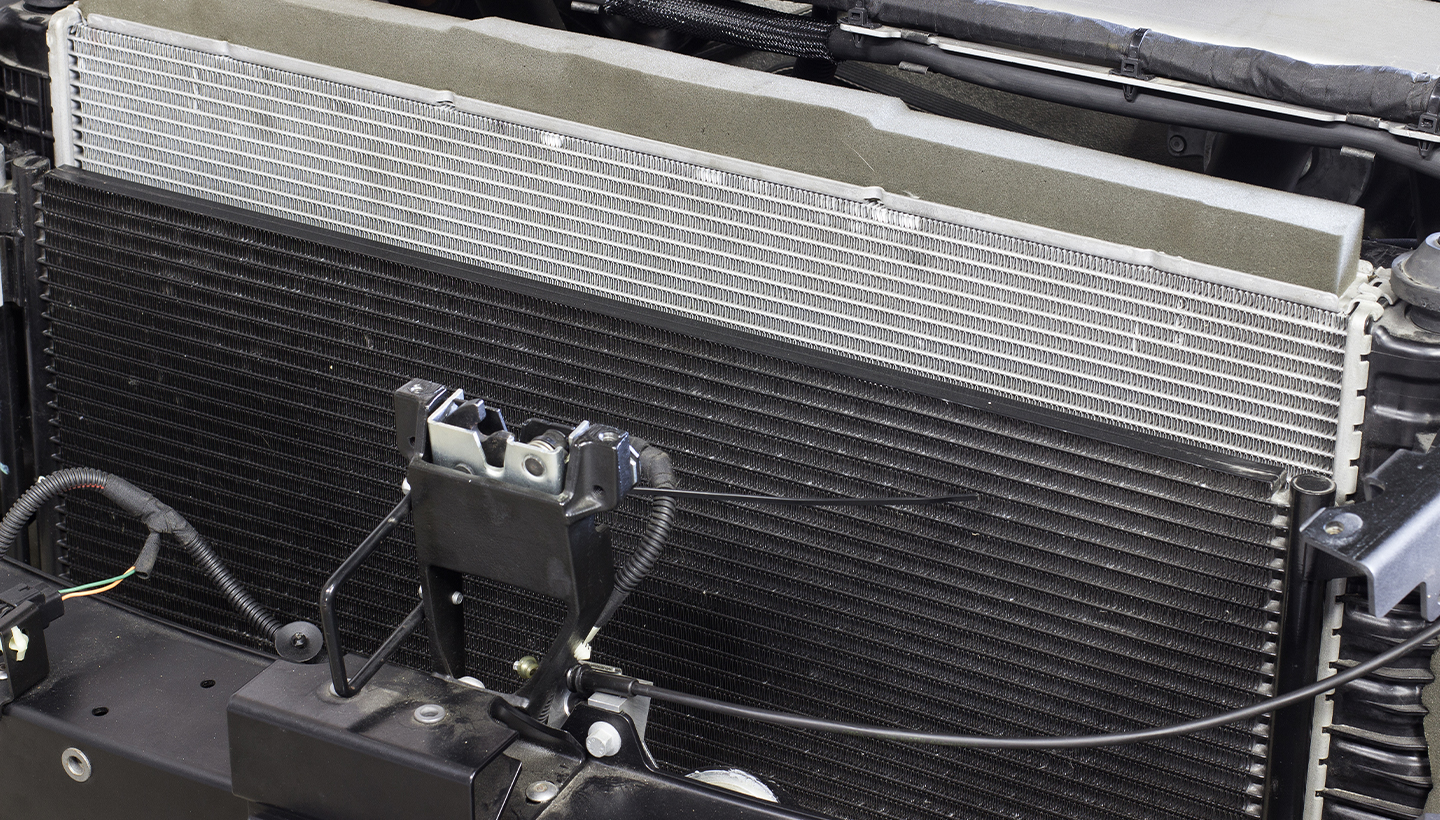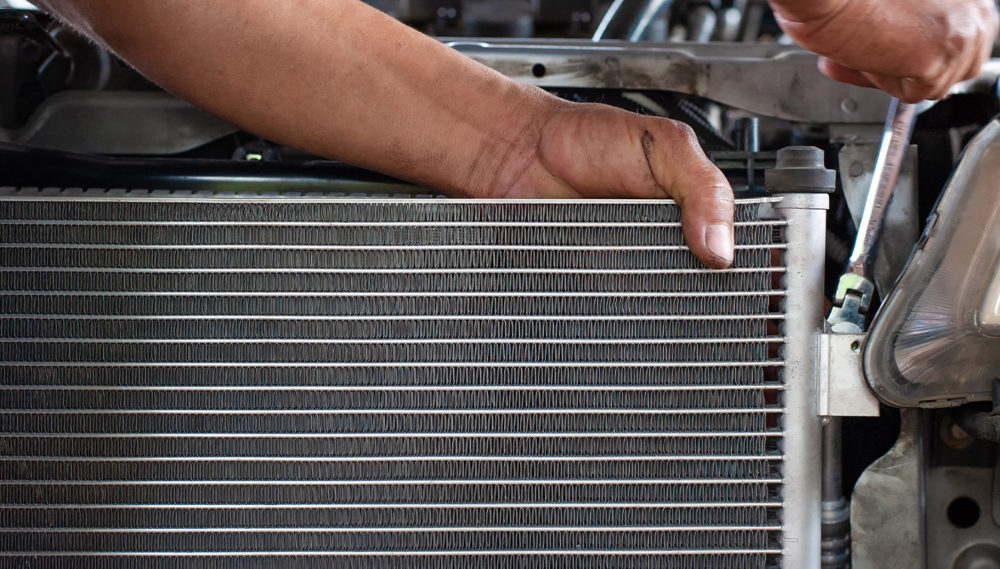Why Cleaning Your Car’s Condenser Grille is Crucial?
27 October, 2023

The condenser grille is an integral part of a car’s cooling system. This vital component in the car’s AC system plays a primary role in expelling heat from the refrigerant before it enters the compressor. As the condenser is located at the front of the car, precisely behind the front bumper, it is susceptible to dirt.
Generally, dust and debris tend to easily accumulate, especially when the vehicle travels on dusty or muddy roads. When the condenser grille is excessively dirty, heat cannot be efficiently dissipated. Therefore, car owners need to regularly clean the AC condenser to ensure it functions properly.
So, what are the benefits, and how do you clean the condenser grille? Let’s explore why cleaning the condenser grille is essential.
The Importance of Cleaning Your Car’s Condenser Grille
The AC condenser has a crucial component in its operation—the condenser grille. Typically made of aluminum, it serves as a heat exchanger, releasing heat from the refrigerant.
When the condenser grille is excessively dirty, heat cannot dissipate effectively. Consequently, the refrigerant’s temperature may not drop sufficiently to reach the necessary liquid form to pass through the expansion valve. This results in the AC system being unable to cool the air and, instead, emitting hot air matching the engine’s temperature.
In such a situation, the recommended action is to dismantle the entire condenser and clean it thoroughly. This ensures the grille is once again clean and effective in expelling heat from the refrigerant, allowing the AC system to function properly and provide cool air in the cabin.
Cleaning the condenser grille is a crucial step in maintaining your car. It has several main reasons:
- Improved AC Performance: A clean grille enables smooth airflow to the condenser, making the AC work more efficiently, resulting in faster and cooler cooling.
- Extended AC Lifespan: A dirty grille can make the AC condenser work harder, potentially reducing the cooling system’s lifespan.
- Cabin Air Quality: Cleaning the grille helps prevent dust and debris from entering your car’s cabin, enhancing the air quality inside.

How to Clean Your Car’s Condenser Grille
There are alternative methods to clean the condenser grille by using high-pressure water spray. However, the results might not be as effective as when the condenser is fully dismantled. Given the crucial role of the condenser grille, it’s recommended to clean it by dismantling it.
Before starting, gather tools for condenser grille cleaning, including wrenches, a socket wrench, a brush, and a clean cloth. You can also prepare a specialized AC cleaner. Below are the steps to clean your car’s condenser grille.
To clean the condenser grille correctly, follow these essential steps:
1. Cool the Car Engine
Ensure the car engine is turned off and completely cool before starting the condenser cleaning process. It’s essential not to attempt cleaning the condenser when the engine is still hot or the vehicle is running.
This is not only to prevent the risk of burns or injuries due to high temperatures but also to protect the condenser itself. Cleaning the condenser while it’s still hot can cause the sprayed water to evaporate immediately, potentially damaging the condenser and reducing its performance.
2. Locate the Condenser
The car’s AC condenser is usually located at the front, between the engine and the radiator. Once found, make sure to open the cover or remove the condenser’s protective panel to allow better access during the cleaning process.
3. Start Cleaning the Condenser
Before cleaning the condenser, ensure the surrounding area is free from dirt or other foreign objects. You’ll need a water and air spray or a compressor and car wash soap for the cleaning process.
Use the water, air spray, or compressor to remove dirt and dust from the condenser’s surface. Make sure to spray air from the opposite direction of the regular airflow, meaning from back to front. This helps clean up the dirt and dust trapped in the grille, ensuring optimal airflow through the condenser.
Avoid soaking the car’s AC condenser in soapy water, as this can damage it. Once the spraying is complete, dry the car’s AC condenser. If there are still dirty parts, you can use a brush to clean them.
4. Use a Brush if Necessary
If there’s stubborn dirt, you can use car wash soap and a soft brush. Apply the car wash soap to the condenser and use the soft brush to gently clean the grille.
5. Rinse the Condenser Thoroughly
After finishing the cleaning, make sure to rinse the condenser with clean water. Use a water spray to clean the condenser from any remaining dust or dirt that has been lifted. Ensure the water spray isn’t too strong, and try not to splash water onto other engine parts.
6. Dry the Condenser
Once the cleaning is complete, close the car’s engine hood. Ensure the condenser is thoroughly dry before starting the engine again. Additionally, check for any damage or foreign objects that may have entered the condenser during the cleaning process.
The process of reinstalling the car’s AC condenser is similar to the steps for removing it. You can use a socket wrench or socket wrench to securely fasten the bolts of the car’s AC condenser. By following these steps, you can maintain the optimal condition of your car’s AC condenser grille, ensuring your AC performs efficiently.
Preventing Condenser Damage
One crucial step in preventing damage to your car’s AC condenser is to perform regular servicing. By scheduling routine services every 3–6 months, you can ensure the condition and functionality of the car’s AC condenser are well-maintained.
Furthermore, it’s essential to keep the condenser clean from dust and debris. You can achieve this by periodically washing and spraying water. However, when spraying the condenser, pay attention to the water pressure. Avoid using excessively high pressure, as it can cause the condenser fins to dent or be damaged.
By performing regular servicing and maintaining the condenser’s cleanliness, you can extend the lifespan and keep the performance of your car’s AC condenser in optimal condition. This not only keeps the car’s AC cool and comfortable but also helps avoid unnecessary repair costs due to neglected condenser damage.



